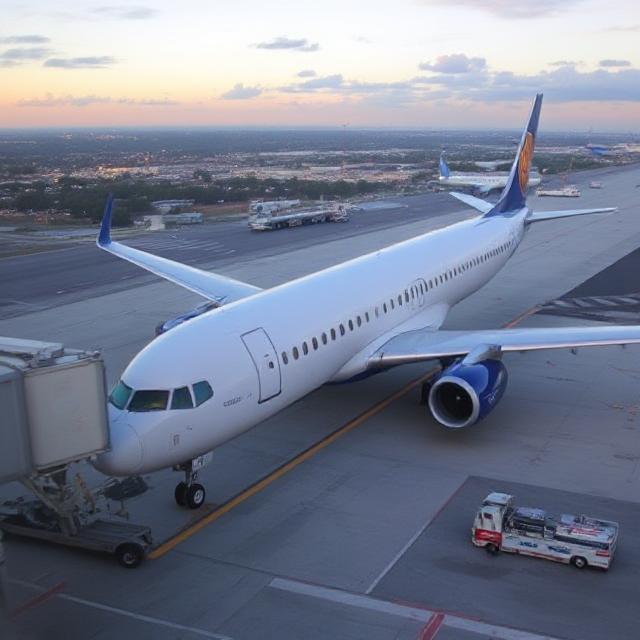Jacksonville flight discontinuations

Jacksonville International Airport (JAX) has long been a critical transportation hub, supporting both the region’s tourism-driven economy and its expanding business community. However, recent months have witnessed a troubling pattern: a series of Jacksonville flight discontinuations by major and regional carriers.
This shift has raised pressing questions for travelers, businesses, and policymakers alike. Why are these routes being eliminated? Are the changes temporary, or do they reflect a long-term restructuring of airline networks? And most importantly, what will the consequences be for Jacksonville’s economic competitiveness and connectivity?
Airlines Scaling Back Service at Jacksonville
Over the past year, several prominent airlines have reduced or withdrawn service from Jacksonville. The adjustments span both legacy carriers and low-cost operators:
- JetBlue – suspended flights to New York-LaGuardia and Fort Lauderdale.
- American Airlines – discontinued nonstop service to Chicago and Philadelphia.
- Frontier Airlines – exited key routes to Las Vegas and Denver.
- Allegiant Air – reduced seasonal service to Midwestern destinations.
These decisions have affected a diverse mix of passengers—from corporate travelers and vacationers to military families—and have generated frustration among those who relied on Jacksonville’s direct connections.
Jacksonville flight discontinuations
One of the most significant factors driving route reductions nationwide is the ongoing shortage of qualified pilots. With retirements accelerating and training pipelines lagging, airlines are forced to concentrate crews where they can generate the highest returns. Unfortunately, medium-sized airports such as Jacksonville often lose service to larger hubs.
Aircraft and Maintenance Constraints
Global supply chain disruptions continue to impact aviation. Airlines face delays in receiving new aircraft and challenges in sourcing critical spare parts, creating maintenance bottlenecks. In this environment, carriers are prioritizing their most profitable markets—leaving routes tied to Jacksonville flight discontinuations at a disadvantage.
Rising Operational Costs
Volatile fuel prices, higher labor costs, and increasing airport fees have placed additional pressure on airlines. Routes that do not consistently achieve strong passenger volumes or premium fares are often the first to be eliminated, which has directly affected Jacksonville.
Structural Market Challenges at Jacksonville
Limited Corporate Travel Base
While Jacksonville offers strong leisure appeal, it lacks the steady, year-round corporate travel base that sustains demand in major business hubs like Atlanta or Dallas. This imbalance makes it difficult for airlines to justify year-round service on certain routes.
Competition from Nearby Airports
Jacksonville’s proximity to Orlando (MCO), Daytona Beach (DAB), and Savannah (SAV) creates competitive pressure. Many passengers are willing to travel to these airports for broader route networks, lower fares, and enhanced amenities, further weakening Jacksonville’s position.
Consequences of Jacksonville Flight Discontinuations
The impact of these route cuts extends well beyond the inconvenience faced by individual travelers:
- Longer and Less Convenient Travel – Passengers who once enjoyed nonstop flights must now connect through hubs like Atlanta or Charlotte, adding time and risk of delays.
- Higher Ticket Prices – Reduced competition often leads to fare increases on remaining routes.
- Economic Ripple Effects – Businesses face reduced accessibility, tourism may slow, and the city risks losing ground in attracting conventions, investment, and talent.
How Jacksonville International Airport Is Responding
Airport leadership is actively pursuing strategies to counteract the negative effects of Jacksonville flight discontinuations:
- Airline Incentive Programs – Offering fee waivers, marketing support, and risk-sharing agreements to encourage airlines to add or reinstate routes.
- Infrastructure Investments – Upgrading terminals, expanding runways, and improving facilities to position JAX as a more competitive and efficient hub.
- Community Partnerships – Collaborating with local businesses and organizations to demonstrate sustained demand and strengthen the case for airline investment.
Jacksonville in the Context of a National Trend
Jacksonville’s experience mirrors that of many mid-sized airports across the United States. Post-pandemic shifts in travel demand, the reduction in corporate travel, and a renewed emphasis on hub-and-spoke models have prompted airlines to consolidate operations. Cities such as Toledo, Dubuque, and even St. Louis have faced similar reductions, underscoring that Jacksonville flight discontinuations are part of a broader industry recalibration rather than an isolated phenomenon.
Strategies for Travelers
While travelers cannot control airline route decisions, there are practical steps they can take to adapt:
- Maintain flexibility in scheduling to secure better fares.
- Use fare alerts and book strategically when prices drop.
- Support flights departing from JAX whenever possible, reinforcing demand.
- Provide feedback to airlines, signaling interest in reinstated or new routes.
Conclusion: The Outlook for Jacksonville Flight Discontinuations
The increase in Jacksonville flight discontinuations is a challenging development for the region, affecting both residents and the business community. However, these cuts are driven more by national industry dynamics than by any inherent weakness in Jacksonville’s market.
With its expanding population, growing tourism sector, and proactive airport leadership, Jacksonville remains a strong candidate for restored or new routes in the future. While the immediate outlook may involve reduced convenience and higher costs, the long-term potential for recovery and growth remains significant.
Jacksonville’s resilience, combined with coordinated efforts between the airport, airlines, and the community, suggests that the current turbulence is temporary—and that the city’s skies will once again see stronger connectivity in the years ahead.
